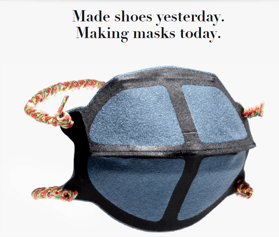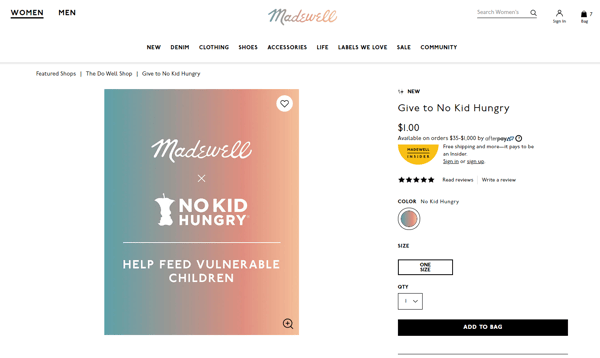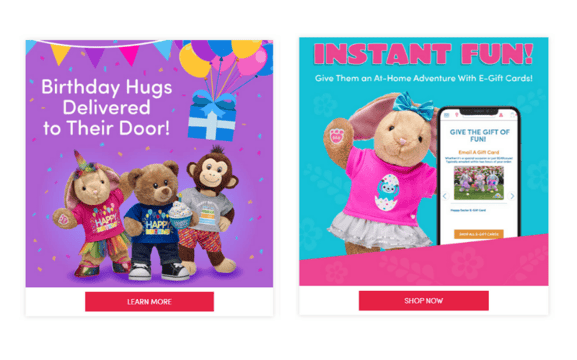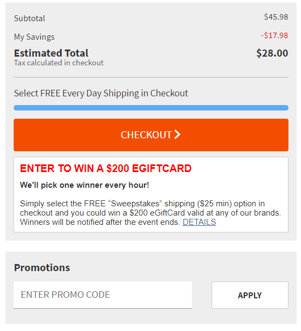6 Brilliant Ways Retailers are Connecting with Customers Right Now

Brands, whether selling direct to consumer or business to business, are seeing increased pressure on their supply chain.
No matter what circumstance brands are facing, all retailers are having to rethink their approach, and assess their systems in place to respond to the quickly changed retail landscape. In the words of Deck Commerce CEO, Christopher Deck, “the circumstances are driving a need to flex, scale, pause and pulse like never before.”
In the words of Ross from the hit television show “Friends”— brands are having to “PIVOT” to match the new season of retail.

Throughout history, humans have pushed the bounds and adaptability of commerce in times of need (and opportunity!). Retailers are creative and find ways to adapt to a “new normal” in times of need and opportunity. We’ve seen many brands find strength by uniting their systems, employees, and customers in creative, and inspiring ways.
Here are 6 creative ways retail brands are staying connected to their customers amidst retail restrictions.
1 | Turning Physical Stores into Micro-distribution Centers
Many warehouses and distribution centers for “non-essential” retail categories have closed temporarily to comply with government safety regulations. Some brands quickly adapted to use their physical stores as micro-distribution centers to fulfill ecommerce orders, even if the store is closed to the general public. Regulations in some areas allow a small number of “non-essential” employees to staff stores – not to interact with customers as they would typically – but to pick, pack, and ship products to their customers safely behind the scenes.
This concept, sometimes referred to as urban fulfillment, not only keeps the brand operation running, but it keeps more employees employed until the proverbial dust settles. And when it is safe for retail stores to open again, these brands have an even greater advantage by having a broader distribution network (as the majority of the population lives near cities) and the ability to offer a true omnichannel customer experience— largely because they have the systems, people, and processes in place.
2 | Manufacturing New Products

When global footwear brand, New Balance, saw an urgent need for personal protective equipment (PPE) in the US, their two US-based manufacturing factories quickly shifted production efforts from shoes to general-use face masks. Additionally, their ecommerce team turned their New Balance Team Sports website, typically used for teams to order sporting apparel, into a resource for healthcare companies. The website now allows businesses to order personal protective equipment for medical professionals on the front lines.
Not all supply chains have this agility—the ability to quickly pivot manufacturing, digital storefronts, and distribution strategies to meet an urgent demand for a new product. The solid foundation and infrastructure New Balance had in place positioned prior to the global pandemic enabled them to offer their capabilities to support their world during a time of need.
3 | Adding or Expanding Digital Products
Whether it’s a high-demand item selling out or shrinking fulfillment capacity, physical products can pose two unique challenges that don’t exist with digital products – inventory and distribution issues. Therefore, many retail brands are looking for ways to expand – or create for the first time – their digital product catalog (i.e. products that are “delivered” digitally). And because digital products have no ongoing cost of goods sold, they can be a profitable alternative to close margin gaps while there are constraints on selling physical products.
Madewell, the women’s clothing retailer took on another form of “digitizing retail” by using their ecommerce website to create donation “products” for charities affected by stay-at-home orders.

Whether you’re collecting donations or selling virtual content— digital products are becoming standard for ecommerce websites to implement and automate with supporting back-end systems.
4 | Enhancing “Gifting” Capabilities
One of the downsides of stay-at-home orders is that many people are celebrating some of life’s most exciting milestones differently than ever before. In efforts to honor social distancing and cancel everything, people have hosted virtual wedding and baby showers, facilitated drive-by birthday parades, and—maybe even like the Deck Commerce team—enjoyed a cup of coffee with their colleagues over video-conferencing.
Likewise, retailers have begun to really think creatively on what part they can play to help keep people connected via physical and digital gifting experiences.
Build-A-Bear, a retail store with an especially unique in-store experience of making soft toys and teddy bears, also helps shoppers imagine online gifting as a fun, personal experience. Their website reminds shoppers what they’re really giving when they send someone a digital gift card – an at-home adventure to create their own furry friend. And birthday bears aren’t just products – they’re birthday hugs delivered to the recipient’s front door! Additionally, online voice recordings can be added to their soft toys, enabling people to continue to feel together during an uncertain time apart.
5 | Shifting Buy Online Pickup In Store (BOPIS) to Contactless Curbside Pickup
While digital-only retailers are used to delivering products to customers with no physical interaction, more omnichannel retailers, like Best Buy, are shifting to “buy online with contactless curbside pickup” rather than the traditional BOPIS model.
Where this shift from store pickup to contactless curbside pickup may be somewhat “temporary” for some retailers to practice social distancing recommendations, the systems put in place for curbside pickup gives retailers future options to continue to offer curbside service— therefore a more robust distribution model, and a more unified approach.
6 | Offering Perks for Customers that Choose Delayed Shipping
 When retail warehouses are working at full capacity and can’t keep up with their standard delivery SLAs, brands are turning to sweepstakes and store credits to keep customers loyal. With smart-order routing and logistics, brands can predict future delivery dates based on capacity and resources. Sharing delayed shipping options with shoppers and allowing them to select between delayed and regular shipping puts the power in their hands.
When retail warehouses are working at full capacity and can’t keep up with their standard delivery SLAs, brands are turning to sweepstakes and store credits to keep customers loyal. With smart-order routing and logistics, brands can predict future delivery dates based on capacity and resources. Sharing delayed shipping options with shoppers and allowing them to select between delayed and regular shipping puts the power in their hands.
To sweeten the deal for shoppers that select delayed shipping, retailers like The Gap Inc. are offering sweepstake entries for shoppers that pick delayed shipping over standard. Winners of the sweepstakes receive digital gift cards toward their family of brands.
Summary
While brands might not have seen this new season of retail coming, there is no doubt that some of the seemingly temporary changes to their distribution models will forever change their future, as consumer habits and expectations are being reconditioned. Also undoubted is that having strong systems, teams, and technology in place enable brands to pivot quickly and adjust to the “new normal.”
And while it is not a new discovery, a unified brand experience across channels is now a must-have. Not only does a unified brand experience create a better shopping journey under “normal” circumstances, it also allows flexibility during atypical and emergency scenarios.
